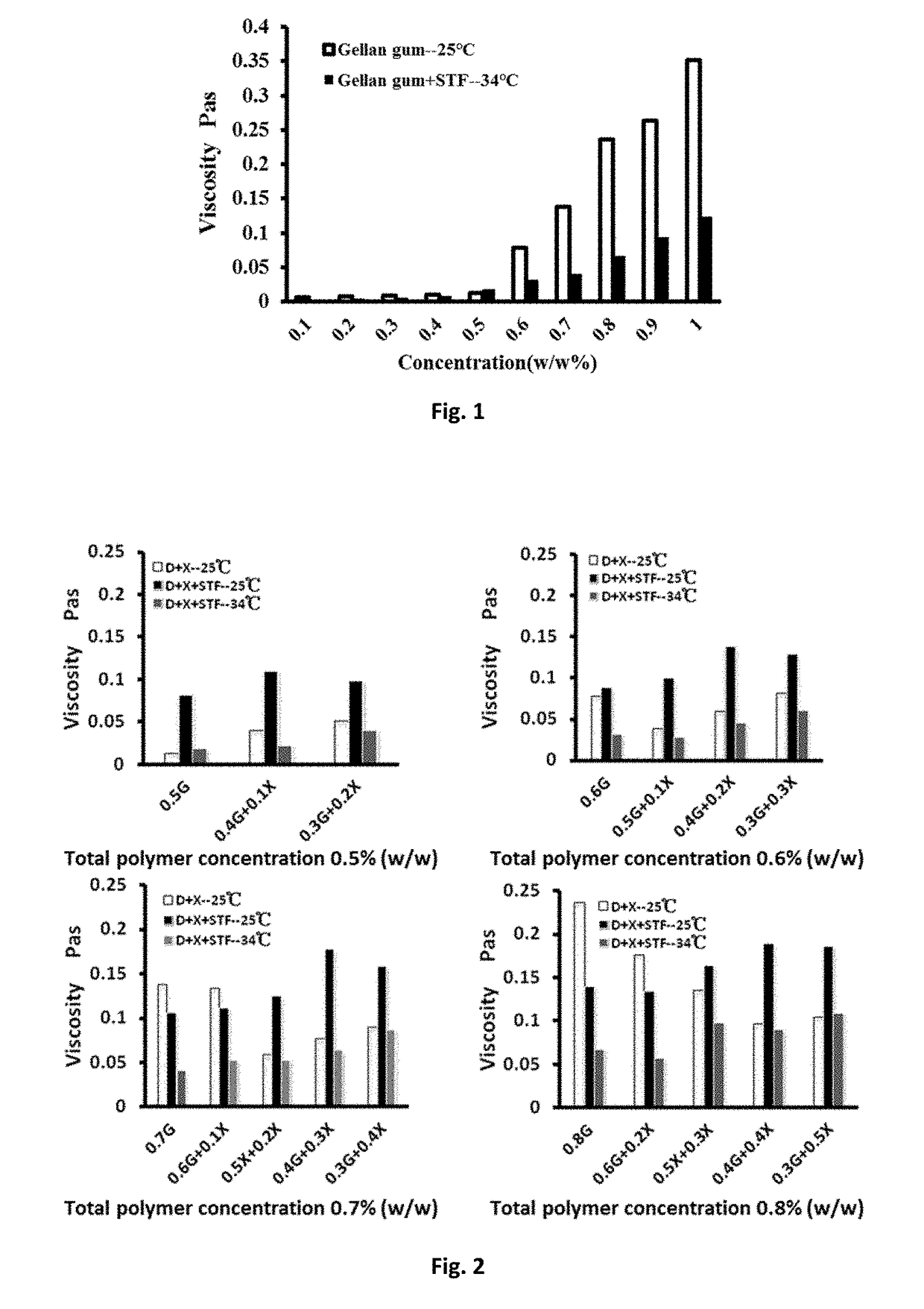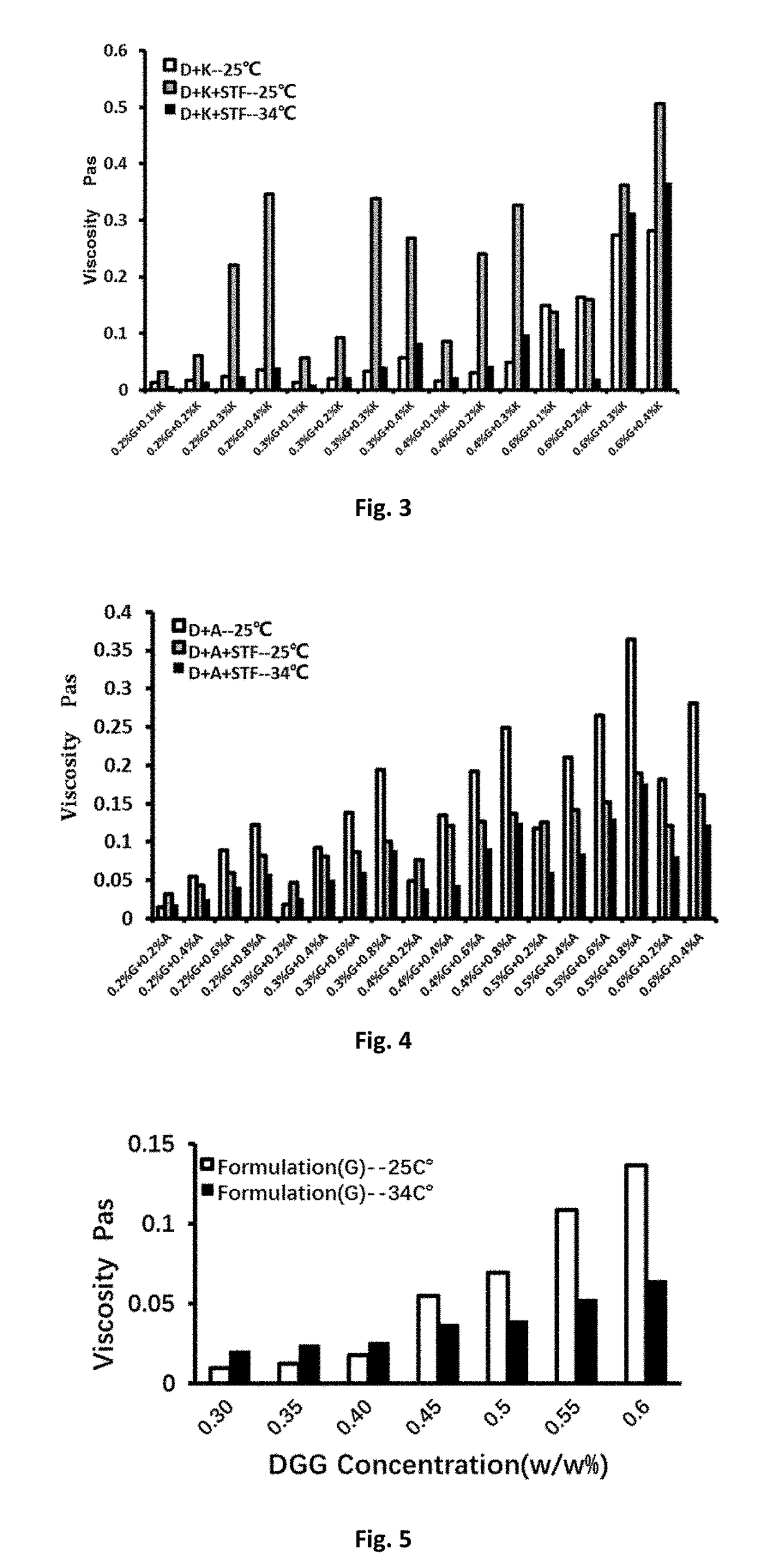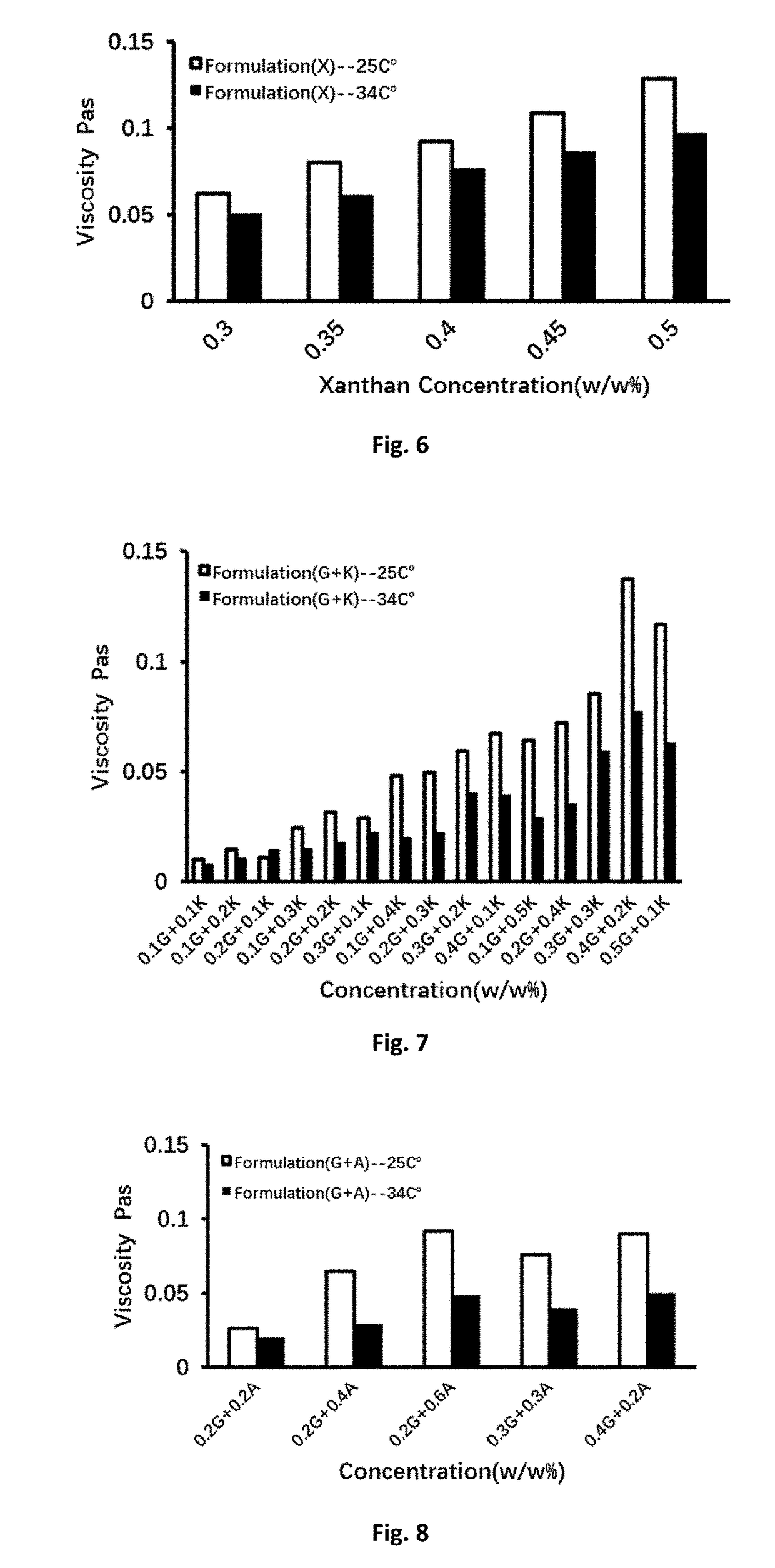Pharmaceutical formulations that form gel in situ
a technology of pharmaceutical formulations and gels, applied in the field of ophthalmic disorders, can solve the problems of inability to accurately diagnose infectious conjunctivitis, inability to cure infections, etc., to achieve the effect of prolonging the residence time of the vehicle, and reducing the risk of infection
- Summary
- Abstract
- Description
- Claims
- Application Information
AI Technical Summary
Benefits of technology
Problems solved by technology
Method used
Image
Examples
example 1
[0062]Preparation of solution of deacetylated gellan gum (DGG) (Kelcogel-Cg-La gellan gum, food grade gellan gum, CAS: 71010-52-1: E418, particle size: ˜42 mesh (355 μm), purchased from CPKelco): DGG was dissolved in deionized water and the solution was stirred in an 80° C. water bath for 1 hour, cooled to the room temperature, allowed to stand until the material is fully swollen, and used to prepared solutions of 0.1% to 1.0% (w / w) concentrations.
[0063]Preparation of simulated tear fluid (STF): NaHCO3 2.18 g; NaCl 6.78 g; CaCl2.2H2O 0.084 g; KCl 1.38 g; dissolve in 1000 mL deionized water: DGG solution and simulated tear fluid were mixed at the 40:7 ratio, and the viscosity of the DGG solution was measured before and after mixing with stimulated tear fluid with a rotary rheometer at 25° C. and at 34° C., respectively. The viscosity change was shown in FIG. 1. For the DGG solution in a concentration range of 0.1% to 1.0% (w / w), its viscosity was reduced significantly under simulated...
example 2
[0064]DGG-Xanthan mixed solution: DGG and xanthan were weighed and used at a certain proportion and added into deionized water. The mixture was stirred in an 80° C. water bath for 1 hour after the dispersion of DGG and xanthan in the water, cooled to the room temperature, and allowed to stand until fully swollen. The morphological scoring of the deacetylated gellan gum-xanthan mixed solution before and after adding simulated tear fluid was evaluated according to the following criteria: (1) thin liquid: 1-3 points; (2) thick gelatinous form: 4-6 points; (3) gel state: 7-9 points.
TABLE 1Morphological scoring of the DGG-xanthan solutions beforeand after adding STF.ScoringScoringDGGXanthanScoringD + X + STFD + X + STF(%, w / w)(%, w / w)D + X25° C.(25° C.)34° C. Δ0.30.11210.21320.32310.43520.53630.63740.40.12310.22310.32420.45610.50.12310.22420.33410.602420.13300.24400.35500.4550
[0065]As shown in Table 1 and FIG. 2, the viscosity change tendency of DGG-xanthan solution was consistent with t...
example 3
[0066]DGG-Kappa-Carrageenan compound solution: DGG and carrageenan were weighed and used at a certain proportion, added into deionized water, and the mixture was slowly stirring in an 80° C. water bath for 1 hour after being well-dispersed. It was then cooled to the room temperature and allowed to stand until fully swollen. The morphological scoring of the DGG-kappa-carrageenan mixed solutions before and after adding tear fluid was evaluated according to the above-mentioned criteria.
TABLE 2The morphological scoring of the DGG-kappa-carrageenanmixed solution before and after adding STF.Kappa-DGGCarrageenan25° C.-D + K + STF(%, w / w)(%, w / w)D + KD + K + STF34° C. Δ0.20.11100.21100.32200.42530.30.11100.21210.32750.43850.40.12200.22640.33630.50.13300.60.14620.24620.37810.4891
[0067]As the result shown in Table 2 and FIG. 3, the viscosity change tendency of DGG-carrageenan mixed was consistent with DGG solution alone at both the room temperature 25° C. and simulated physiological condition...
PUM
| Property | Measurement | Unit |
|---|---|---|
| Fraction | aaaaa | aaaaa |
| Fraction | aaaaa | aaaaa |
| Fraction | aaaaa | aaaaa |
Abstract
Description
Claims
Application Information
 Login to View More
Login to View More - R&D
- Intellectual Property
- Life Sciences
- Materials
- Tech Scout
- Unparalleled Data Quality
- Higher Quality Content
- 60% Fewer Hallucinations
Browse by: Latest US Patents, China's latest patents, Technical Efficacy Thesaurus, Application Domain, Technology Topic, Popular Technical Reports.
© 2025 PatSnap. All rights reserved.Legal|Privacy policy|Modern Slavery Act Transparency Statement|Sitemap|About US| Contact US: help@patsnap.com



